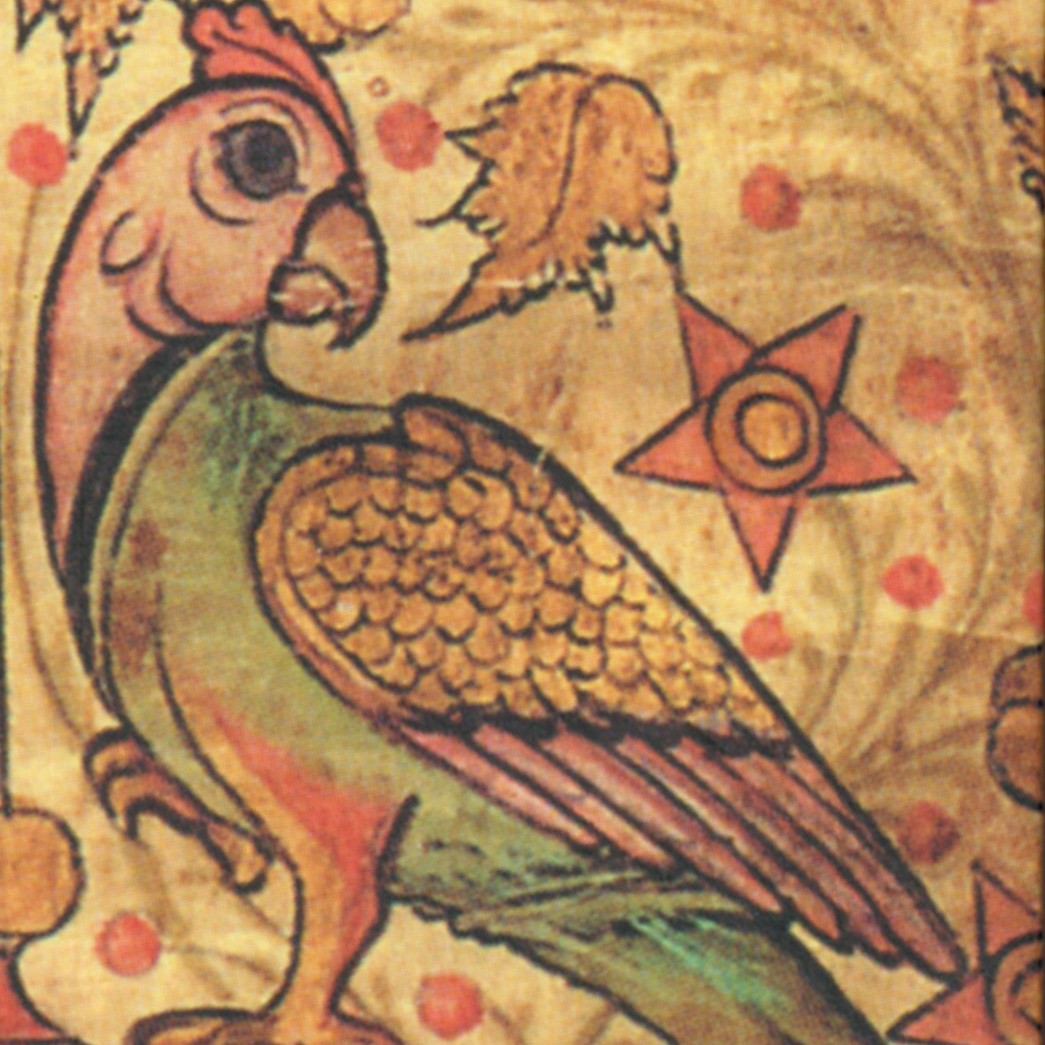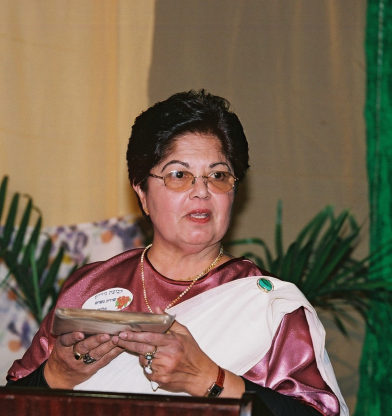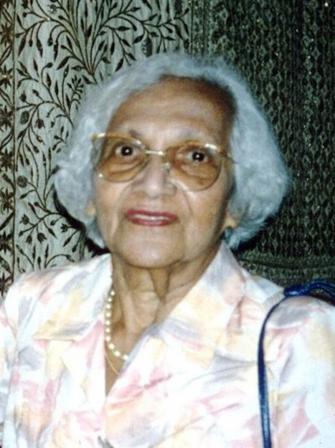1997/ 2006
8. Kadavumbhagam—Kochi Synagogue Song
8a. Venus Lane, recorded by Barbara Johnson, Jerusalem, May 2006; I-15.
8b. Jacobai E. Cohen. Recorded by Barbara Johnson, Kochi, January 1997.
Mannil mĕkavĕṟuṃ, kŏcci tanni
Mānicca jūtaṟ, kaḍakaṃbākaṃ
Kaḍakaṃbāgamŏkkĕ, ŏttukūḍi
Karasīnāyi paḷḷi, ĕḍattu pŏkki
1. The best place in the world—Kochi is the one!
The most respected Jews are from Kadavumbhagam.
All of Kadavumbhagam united as one,
To raise up a paḷḷi like Mount Sinai.
All those who belonged there gathered as one.
Important people came and spoke in golden words,
With blessings for prosperity, as it should be done.
The assembly elders then blessed the young.2. As blessings were recited, the foundation was laid,
And in the center, gold and pearls were placed.
Then they raised it up—the paḷḷi like a pearl!
Among the four sides, they chose the western one
To build the holy heikhal—so greatly desired
As a dwelling place for the Eminence of God.
It was elegantly patterned, like a silversmith’s trade.
Beside its lovely doors, two pillars were made.3. The pillars were bent and fashioned like an arch,
Creating with perfection two chambers between.
Of these two chambers, the first that was made
Is the dwelling place for the Father of the World.
There surely is a radiance, a shining Presence there,
As brilliant as the sun when it’s setting in the sky
At the very same time as the rising of the moon.
Beneath the roof of tiles, it is splendid indeed.4. Ten plus five ceiling beams they made with delight.
They brought fifteen panels with decorations fair.
They raised it to a height of five and one fourth kols,[1]
And the balcony they built was five kols wide.
A staircase they constructed for ascending there.
The women go and sit there—the ones with covered heads—
So, gathering together and worshipping as one,
Looking through three openings, they can see the prayers.5. Delicate and fine are the carvings of wood.
Exceedingly red are the circular crowns.
With lovely lotus flowers they are adorned.
In the center stands a beautiful teybah[2]
With its four feet fashioned out of wood.
By Your grace, O God, please take us up
To the finest place—the best in the land.
Please bring Your children; bring Your People now.
This song celebrates the building of the oldest synagogue still at least partially standing in Mattancherry, Kochi. According to carved stone inscriptions, its construction began in 1539 and was completed in 1544 (Sassoon 1932, 577). It may well have been the “New Synagogue” discussed in contemporary records of the Portuguese Inquisition and vividly described by a Jesuit visitor in 1556 (Tavim 2010, 10–11). The Kadavumbhagam Paḷḷi of Kochi (in contrast to the synagogue of the same name in Ernakulam) is aptly named for its location next to what was a major landing-place (kaṭavu) for boats. Ruby Daniel recalled hearing that the Hindu Raja of Kochi used to request that its doors and the door to its Torah ark be left open when his royal boat was passing by, so he could stop and prostrate toward the synagogue (Daniel and Johnson 1995, 129); this suggests that the king shared the belief (reflected in stanzas 2 and 3) that a radiant divine presence dwelled in its Torah ark (heikhal). I have also heard other Jewish elders from Kerala refer to the Shekhinah (Hebrew), the Divine Presence—shining in a Torah ark.
After its entire congregation left for Israel in the 1950s, this synagogue was sold to non-Jews and used as a warehouse until the Israel Museum purchased and transported its dark and neglected wooden interior to Jerusalem. There it was painstakingly restored, reconstructed as part of the museum, and opened to the public in 1995 (Fishof 1995).
This song about the synagogue (which is found in only two notebooks, both Paradesi) is filled with obscure words and phrases that presented a translation challenge for Ruby Daniel until she was able to view the restored interior in Jerusalem and associate the measurements and numbers in stanza 4 with the actual ceiling of the sanctuary, constructed with five large teakwood crossbeams and ten smaller connecting beams, creating fifteen panels. After more than 10,000 hours of restoration work in the Israel Museum, the “exceedingly red” color mentioned in stanza 5 was revealed in the carved lotus flowers of the ceiling and the painted designs and flowers on the doors, the stairway, and the ceiling under the balcony.
Though frustrated by the obscure language in his first encounter with the song, Zacharia immediately expressed his appreciation for its poetic imagery, featuring the glory of a simultaneous sunset and moonrise. Zacharia notes that there is no definitive way to date the song’s composition, but the obscurity of its language and these apparent references to its original appearance and process of construction suggest to me the possibility that it may have been composed as early as the sixteenth century, when the memory of its creation was still alive.
Among all the synagogue songs, this one has the greatest emphasis on details of construction. After an introductory stanza, the entire song is structured as a narration of the building process, beginning with the laying of the foundation with embedded gold and jewels— a traditional Kerala practice. Following construction of the Torah ark on the western wall (closest to Jerusalem, as in all the Kerala synagogue plans), it proceeds with the assembly and raising of the ceiling and the construction of a balcony for the upper tebah, with stairs going up to it. Measurements are specified in kols—a traditional Malayalam measure by means of a carpenter’s rod, which might differ in length from region to region. Stanza 5 describes the finishing touches: the colorful woodcarvings and the building of an elegant central tebah. The final two lines are ambiguous, referring perhaps to Kochi itself, or perhaps to Jerusalem.
As in the Tekkumbhagam-Ernakulam and Paradesi paḷḷi songs, a female perspective is expressed in stanza 4, which describes the women’s section of the synagogue. The women (“those with covered heads” or, in another reading, “the respected women”) sat in a room behind the upper tebah, where they could see as well as hear the prayers by looking through the door and windows of the latticed partition linking their space with the balcony from which the Torah was read from a second tebah—an architectural feature unique to Kerala synagogues.
Ruby Daniel and I could find no one who remembered how to sing this song until, at her request, it was “tuned” and sung for me in 1997 by Jacob E. Cohen of Kochi, so that I could record it for her. He set it to the melody of the Hebrew piyyut Yom Yom Yidroshun (’Areshet 1980, 252). Due to the poor quality of that recording, Venus Lane recorded the song again in 2006 to facilitate its musical transcription.
After the interior of this synagogue was removed to Jerusalem, its exterior structure remained in Jewtown Kochi until it suffered a partial collapse during a monsoon storm in 2019. As of 2023, discussions are under way in Kerala about partial reconstruction.
________________________________
[1] Kol is the Malayalam word for a carpenter’s measure.
[2] Tevah (pronounced teybah in Jewish Malayalam) is the Sephardi Jewish term for the raised platform from which the Torah is read aloud. In Ashkenazi synagogues, it is called the bimah.
[3] See Eliyahu-Oron and Johnson 2021, 126–132 for an illustrated discussion of the synagogue’s architecture and history.







